Grand boulevards, leafy parks of all sizes, pedestrian streets lined with bars and restaurants, majestic turn-of-the-century buildings, cafes and narrow streets…Sofia, like all sizable European cities, offers these impressive and delightful resources – for its citizens and for visitors like us.
The symbolic guiding spirit of the town is Sofia, featured in a columnar statue standing high above the center of town. It’s just a few decades old, and named in error, we’re told, for Saint Sophia, whose eponymous church dates back to the 4th century when the town was called Serdica. Most consider her cleavage and attire somewhat unsaint-like.
The principal pedestrian boulevard in central Sofia is lined with porticoed bars and restaurants, more of which occupy the streets that cross the boulevard. You can find a place here offering just about any type of food or drink you want, from the Michelin-starred to Club Fetish, which offers very personal massages. The word “lively” understates the scene on this street in the evening.
On other principal streets, collections of century-old buildings, often refreshed or refurbished now for modern use, make for elegant boulevards. The yellow bricks everywhere are a distinctive feature of the central city. They were a gift from an Italian princess who married into the royal Bulgarian family. Though very slippery when wet or snowy, and noisy to ride on, they form a very strong street, one capable of handling the heaviest of traffic, such as Communist era parades of tanks and military vehicles. Regularly the residents tried to replace the bricks, but by now they’ve become a cultural heritage…slippery or not.
And there are some very nice murals and other street art along the way, like one of our favorites a massive frieze of a feast, sculpted onto the wall in relief, which decorates the side of a building adjacent to one of the smaller theatres of central Sofia.
Sadly, Sofia shares the modern ailment of too many cars: “every family seems to have two or three now,” according to one resident. Despite the wide streets, therefore, traffic can be jammed up in town and on the feeder highways around it.
Perhaps befitting her bosomy statue, lively is a word that fits Sofia perfectly. Every night, we could choose among several concerts, a host of plays, an opera or two, or nightclubs with a wide range of music – even before the festival season kicked in. The National Theatre, named for the most famous Bulgarian playwright and author Ivan Vazov. The Theatre itself and its side venues offered up to 15 plays each night!
The theatre is graced by a lovely and lively park to the front of it, in which we could choose from several bars/restaurants to while the hours away. During much of the day a small band of capable musicians kept an outdoor concert going, though we wished for more Bulgarian specialties, instead of their choice of tourist favorites like My Way and Smoke on the Water.
Communist leaders before 1990 transformed too much of the central city with massive state buildings and cheap apartment complexes. But since then exciting architecture and charming street life have asserted themselves anew.
Less intrusive vestiges of the old days can be found in the very popular Central Park of Sofia, the Borisova Gradina, which stretches for 3 or 4 kilometers. It contains hectares of grassy or forested spaces, several sets of clay tennis courts, two stadiums for football or concerts, pathways to wander, playgrounds, cafes, and some wilder sections.
Along with the sculpted heads of countless Bulgarian heroes, politicians and artists, still standing in the park are two enormous monuments that paid tribute to the Russian army (and remained after most other Communist era statuary was relegated to the open-air Socialist Art Museum).
Below ground, history goes back a lot, lot further in Sofia.
You can barely put a shovel in the ground in Sofia without finding some layer of history – each of which we happily traced here. The Thracians once lived in the area, founding the fortified town of Serdica 4000 years ago in a place known since then for its healthy hot springs.
You don’t see much of Thrace except for objects dug up here and in the vicinity, but the art is stunning. Our favorites were Thracian goblets with stag’s heads from 2500 years ago. These graced a brilliant exhibit at the National Art Museum centered around the legend of Jason, who traveled the land of the Thracians and the rest of the known world in his ship the Argo. Later, as we posted, we found many more traces of the Thracians around the country.
Romans took control about 2000 years ago, building up the city to their needs. In building a hotel recently, the developers discovered a Roman amphitheatre lurking below ground on the site. Aside from changing the hotel’s design, they incorporated part of the ruins into a hotel bar. The rest of the amphitheatre is still not open to view, however.
A few years before, during construction of the subway system, crews unearthed the main Roman road, with its massive defensive walls and gates.
Adjacent to the subway structure, they also uncovered what’s left of the Roman homes of the period. These foundations are flanked not just by the subway but also by modern imperial Communist era buildings, as well as adjacent to the main 16th century mosque of the Ottoman period.
By the 4th century, the first Christian Roman Emperor Constantine nearly made Serdica his imperial capital of Constantinople, instead of what is now Istanbul. Constantine lived here at times and loved the town – and its waters. The best place to see traces of that time is the ancient church of St. Sophia, the true namesake of the modern town.
It’s now composed of layers and layers of previous churches that date back to Constantine, including superb tiled flooring. Among the oldest elements are tombs from a necropolis inside, arched brick structures with painted interiors.
By the 9th century, Bulgar tribes formed their own independent realm despite many incursions.
From the 14th century, the Ottoman Empire ruled for 500 years until an independent Bulgarian republic emerged from Ottoman defeat.
Even then many Muslims remained in Bulgaria. They continued to pray at Sofia’s still standing principal mosque of Sofia, Banya Bashi, from the 16th century. Nearby are the old public baths of that period.
Bulgaria has always been at the ever-shifting historical borders of three major religions: Roman Catholicism, Eastern Orthodox and Islam – after so-called “pagan” religions contended for the region against Roman pantheism.
The oldest building history in Sofia, Saint George Rotunda, is a kind of summation of religious shifts here. The church was laid on the foundations of a pre-Christian Roman temple. The current structure dates from the 4th century when Rome adopted Christianity as its principle religion. Inside the dome are Christian frescoes from the Eastern Orthodoxy of the 10th to 14th century, darkened over time and difficult to see – let alone photograph, and that’s forbidden anyway. During Ottoman rule, it became an Islamic mosque. Finally, the rotunda was deliberately hidden behind massive public buildings of the anti-religious Communist era.
Eastern Orthodox is the main religion practiced here because of the influence of Constantinople and Russia within the Bulgar empire.
The grandest of its churches in Sofia, Alexander Nevsky, dates from the time of Russian Tsar Alexander II in the late 19th century. The church honored him and his patron saint, Nevsky.
In more recent times, Judaism added to the mix after the exile from Spain and during the Ottoman period. Sofia’s city center still holds the largest synagogue in eastern Europe, once serving many of the tens of thousands of Jews who lived in the country.
The Jewish population was even sheltered from Nazism here during WW2, when a recalcitrant Bulgarian leadership ensured that no Jews were sent to concentration camps. Later, however, subject to persecution by Russian and Communist leaders during the Cold War, most of the Jewish population fled to Israel and the west.
A rich tapestry formed of culture, architecture and religion over time indeed fills this pleasant city.
(Also, for more pictures from Bulgaria, CLICK HERE to view the slideshow at the end of the itinerary page.)



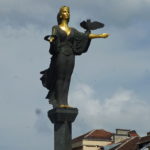

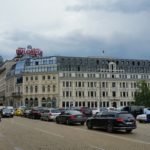


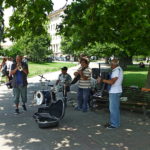
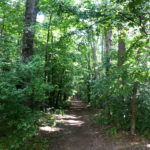

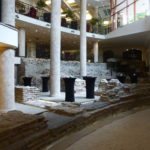
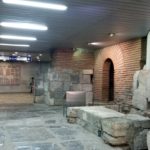
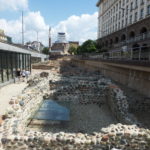




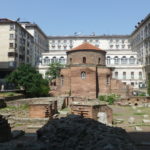




This is test comment